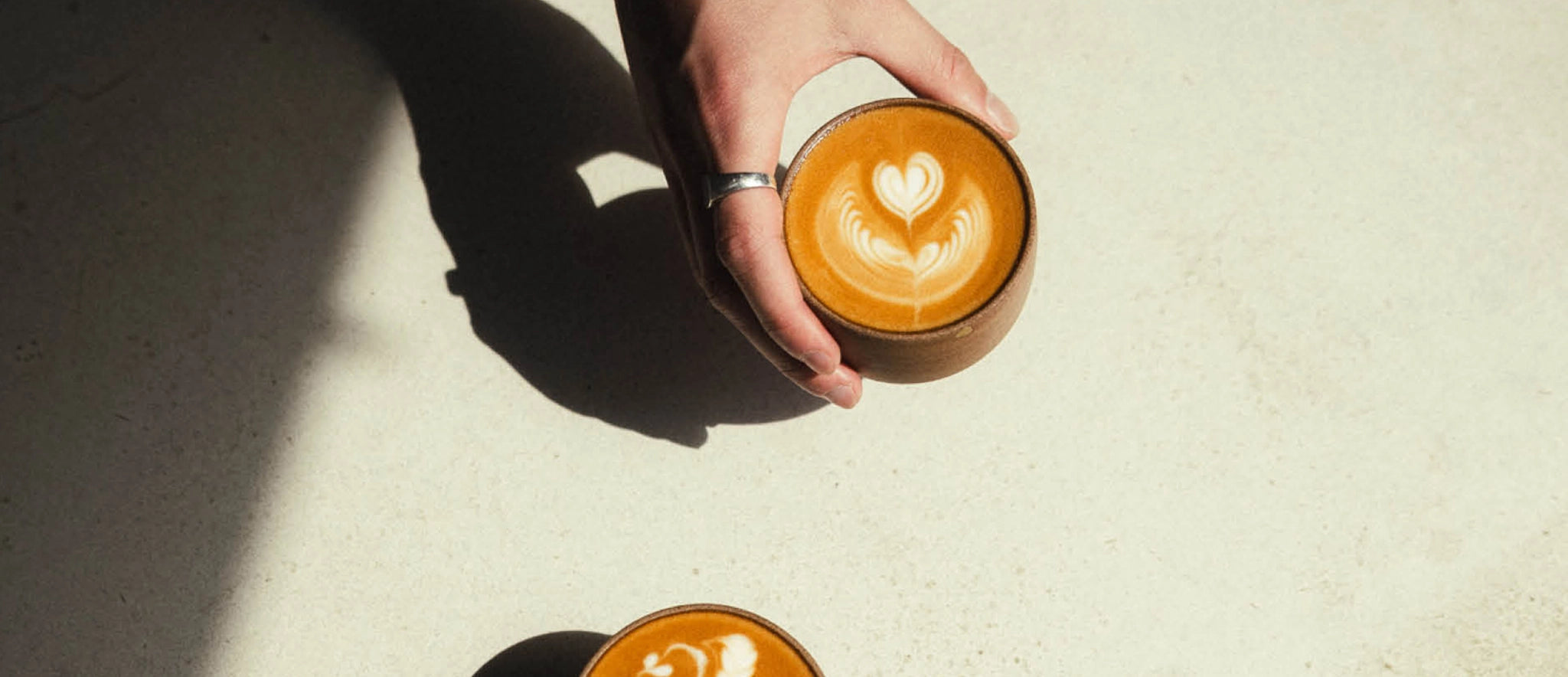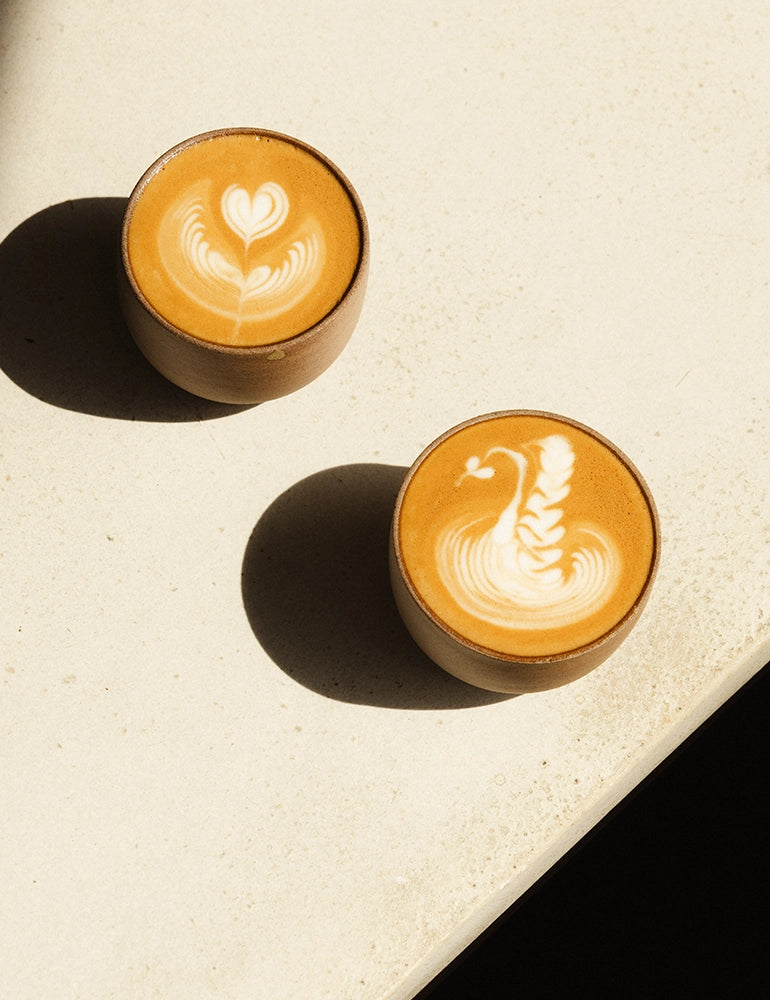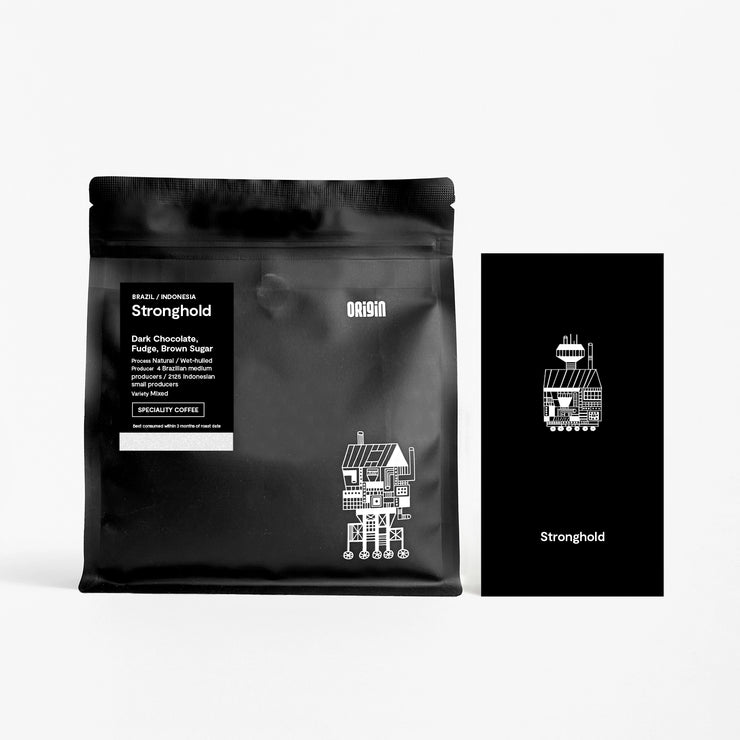
How To Make a Flat White
A flat white is a beloved espresso-based coffee drink, known for its smooth texture and balanced ratio of coffee to milk. Its origins are debated between Australia and New Zealand, but it has since become a favourite in coffee shops worldwide.

How to make a flat white
The flat white is smaller than a latte, with a more concentrated espresso flavour, complemented by a fine layer of velvety microfoam that gives it a creamy finish without diluting the coffee's boldness.
In this guide, you’ll learn how to make a flat white at home like your favourite cafe does. We’ll cover everything you need, from the essential equipment like an espresso machine to the best coffee beans for the job. By following these steps, you’ll be able to create the perfect balance of espresso and steamed milk, giving you that signature smooth, rich taste that defines a great flat white.
What is a flat white?
A modern classic, a flat white comprises espresso coffee and lightly steamed milk that forms a thin microfoam layer on top. Unlike a latte or cappuccino, the flat white ratio is more balanced, and the milk texture is much lighter, resulting in a richer coffee flavour and smoother, velvety consistency.
How much milk is in a flat white?
The flat white ratio is approximately 1/3 espresso, and 2/3 steamed milk, with a thin layer of microfoam (around 0.5cm). The consistency of the milk is a defining element of a flat white, with the desired texture being glossy, with a light microfoam sitting at the top of the finished coffee.
Flat white vs latte
The main difference between a flat white and a latte is the quantity of milk and foam used. A latte calls for a higher milk-to-coffee ratio with a thicker foam, roughly filling the top 1cm of the cup. The result is a milkier, creamier texture with a lighter coffee flavour, usually served in a 7-9oz cup.


How much milk is in a flat white?
The flat white ratio is approximately 1/3 espresso, and 2/3 steamed milk, with a thin layer of microfoam (around 0.5cm). The consistency of the milk is a defining element of a flat white, with the desired texture being glossy, with a light microfoam sitting at the top of the finished coffee.

Flat white vs cappuccino
Milk texture is the main differentiator between a flat white and a cappuccino. A cappuccino is a classically ‘frothy’ coffee, containing espresso, steamed milk, and milk foam in equal parts. The resulting drink has a thick, foamy consistency with and a milkier taste, usually served in a 7-9oz cup.

The Perfect Pairing
Flat white recipe
Equipment
- Espresso Machine with Steam Wand
- Coffee Grinder
- Coffee Scales
- Tamper
- Milk Pitcher
Recipe
- 36g of freshly brewed espresso
- 120ml of cold milk, or preferred non-dairy alternative
What coffee should I use?
At Origin, all our coffee is omni-roasted, which means it’s suited for all brewing methods. The coffee is roasted to the sweet spot that gets the most from the innate characteristics from the terroir it was grown. For a more traditional taste, we recommend using a coffee blend for your espresso. Our mainstay espresso collection has something for everyone – from dark and rich to bold full-bodied, notes of chocolate, nuts and sugar pair well with milk and non-dairy alternatives for a delicious and balanced final cup.
Step-by-step guide
- Prepare the espresso. For guidance on brewing a delicious and balanced espresso, see our Espresso Brew Guide.
- Pour fresh cold, quality milk ( or your non-dairy alternative) into your clean pitcher, to just below the spout.
- Steam the milk, taking care to only add a very small amount of air to ensure the desired microfoam required for a flat white – usually only a couple of seconds, depending on the power of your machine.
- For a step-by-step on achieving perfect milk, check out our comprehensive guide on How to Steam Milk. The goal is milk that is thin and glossy, with no visible bubbles.
- Gently knock the pitcher on the countertop to disperse any bubbles and swirl the milk for a silky consistency.
- You’re ready to pour. Starting from a small height, pour the milk into the espresso with the cup at an angle, swirling gently to incorporate.
- When the cup is 2/3rds full, bring the pitcher close to the surface and continue to pour, straightening the cup as it fills – here is where you can practice your latte art skills.
Looking to perfect your pour? Check out our Latte Art Enthusiast Courses, held in London, Cornwall, Bristol and Edinburgh.
Note: the recommended temperature for steaming milk is 60-65 °C. The flavour and consistency of milk alter irreversibly when heated past 70°C and can result in a poor taste. While a more experienced barista might recognise the correct temperature by touch alone, you might consider using a thermometer to ensure you don’t overheat.


What coffee should I use?
At Origin, all our coffee is omni-roasted, which means it’s suited for all brewing methods. The coffee is roasted to the sweet spot that gets the most from the innate characteristics from the terroir it was grown. For a more traditional taste, we recommend using a coffee blend for your espresso. Our mainstay espresso collection has something for everyone – from dark and rich to bold full-bodied, notes of chocolate, nuts and sugar pair well with milk and non-dairy alternatives for a delicious and balanced final cup.
Our Espresso collection
FAQ
Can I make a flat white without an espresso machine?
Yes, you can achieve a similar profile when brewing with a Moka pot or AeroPress. The taste and consistency will vary slightly depending on the equipment you use.
Can I make a flat white without a steam wand?
Yes, while using a steam wand is the most popular and preferred way to steam milk for coffee in general, you can still steam milk at home without one. You can choose to gently heat your milk on a stove, whisking as it heats; place heated milk in a French Press, using the plunger to create foam, or look to buy a stand-alone milk frother for a similar effect.
What is microfoam?
Microfoam is a finely textured foam that’s used to make a flat white. Microfoam is made by steaming milk. The term ‘micro’ is taken from the characteristically small, very fine bubbles that appear in steamed milk, which are key to achieving the velvety, smooth and creamy texture needed for a flat white.








